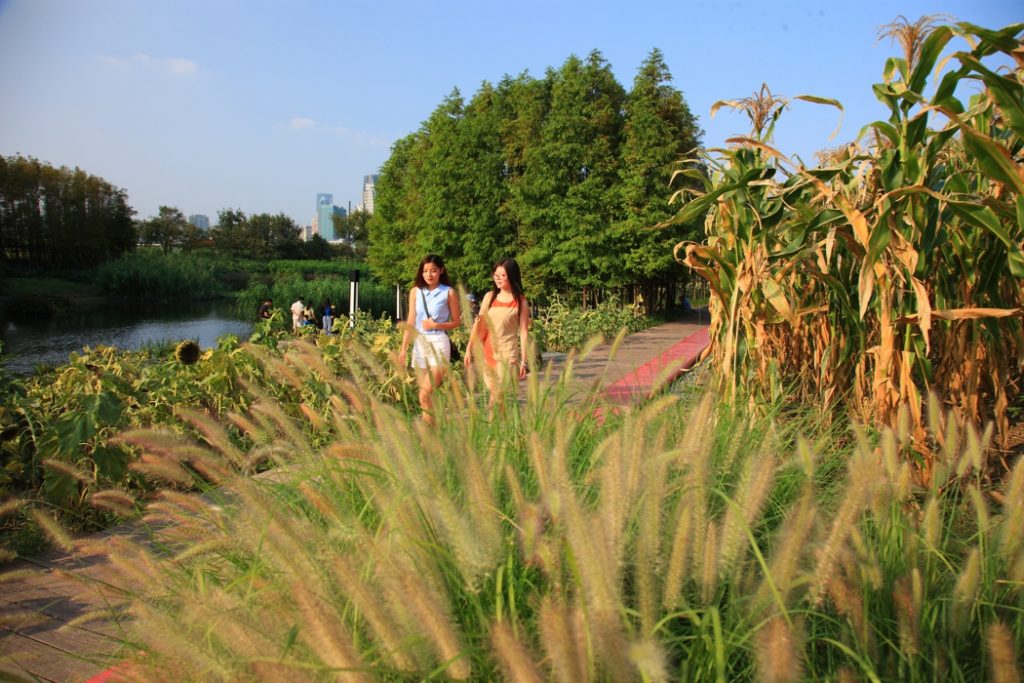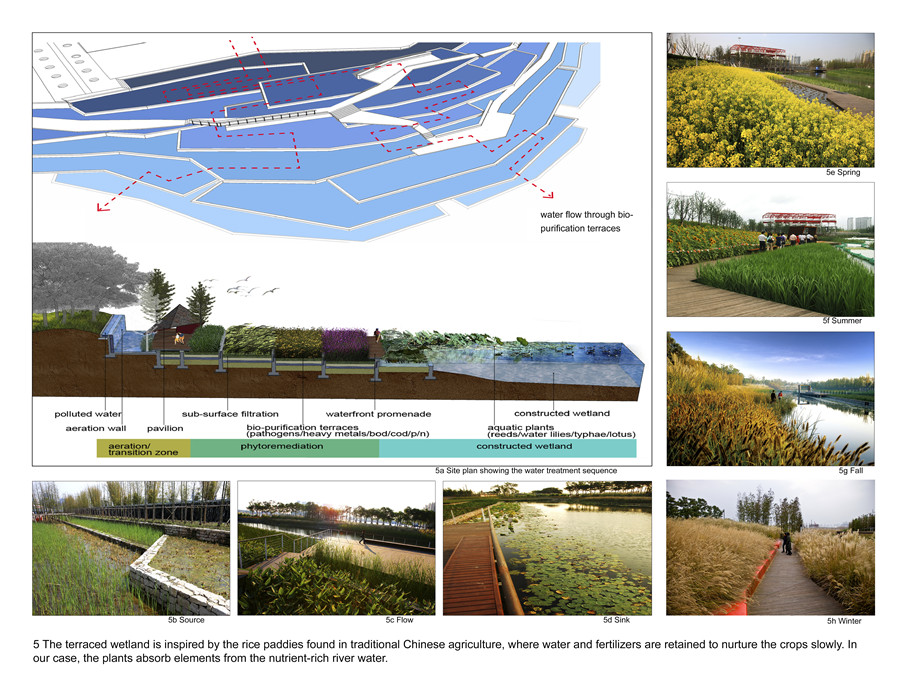
Shanghai Houtan Park, China
Turenscape landscape architects lead the renewal project of the Houtan Park’s Huangpu riverfront. Shanghai Houtan Park was built on a brownfield site in 2010. It is a regenerative landscape on Shanghai Huangpu river bank and won the ASLA professional awards. Its urban agriculture, ecological flood control and wetland water purification components are working as an integral system in an aesthetic form. The site is a narrow linear 14-hectare band and used to be a lay down yard for a steel factory. Houtan Park is a living system with the productive urban landscape providing multiple services for nature and society. It evokes not only the area’s agricultural civilisation, but also projects a future ecological civilisation with food production.

Some of the crops which are grown in Houtan Park are corn and sunflowers. (source: Turenscape 2022)
The site design obeys the rules of landscape ecology and overlaps the three different layers standing for different cultures, including the agricultural and industrial and post-industrial eco-civilisation. It is a reminiscence of the agricultural heritage using crops to create an urban farm reconnecting people with our agricultural history. People enjoy seasonal changes of different crops from sunflowers, rice to green clover, providing large amount of economic benefits and an opportunity to learn more about agriculture.

The now naturally treated waterway attracts many visitors. (source: Turenscape 2022)
Part of the regeneration of the site was to restore the waterway that comes from the Huangpu River which was ranked with the lowest possible ranking of ‘Lower Grade V’. After implementing tiered water terraces and introducing multiple wetland plants the water quality went from being un-swimmable and hosting no life to being able to be used for non-potable operations such as toilet and laundry water. It is now ranked at a ‘Grade III’. This filtering system is also cheaper than conventional water treatment methods. The new design for the waterway still protects from flooding, but now is aesthetically pleasing as it does so. The terraces created also host crops such as rice which makes the
Houtan Park exhibits approaches for how to revive brown sites and former industrial waste lands into sustainable, productive landscapes which provide food, protect and benefit infrastructure and enhance culture.

This productive urban landscape takes inspiration from traditional agricultural landscape patterns. (source: Turenscape n.d.)
For further information see the architect’s own website.
Image: Aerial shot of Houtan Park (source: Turenscape 2022)
Back to previous page Related information and design projects
